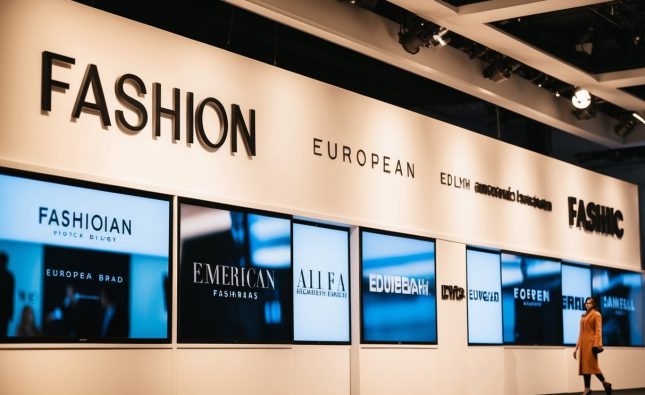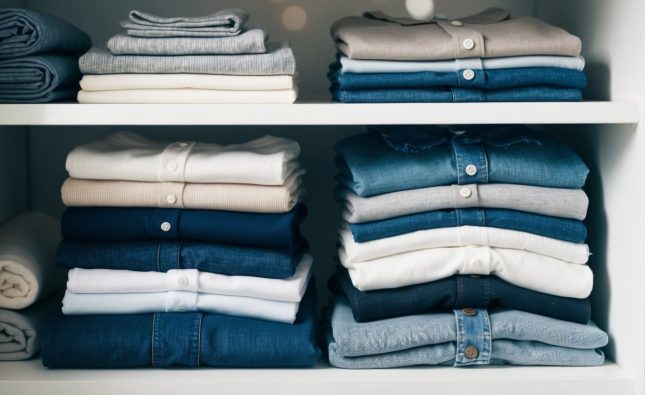
The fashion industry presents a stark contrast between luxury brands and fast fashion retailers. Luxury brands emphasize quality, exclusivity, and timeless design, often commanding high prices that reflect their craftsmanship and heritage. Fast fashion, on the other hand, focuses on quick production and affordability, enticing consumers with rapidly changing trends and accessible pricing.

The choice between luxury and fast fashion often boils down to personal values, such as sustainability, quality, and individual style preferences. Many consumers grapple with the allure of trendy items at low prices versus investing in pieces that promise longevity and sophistication. This decision reflects broader societal trends concerning consumption, ethical considerations, and personal identity.
Understanding these distinctions can help consumers make informed choices aligned with their values and lifestyles. As the fashion landscape continues to evolve, the implications of these choices reach beyond mere aesthetics, influencing environmental sustainability and social responsibility.
Defining Luxury and Fast Fashion
Understanding the distinctions between luxury and fast fashion brands reveals their unique characteristics and market strategies. Luxury brands focus on exclusivity, craftsmanship, and heritage, while fast fashion prioritizes speed, affordability, and trend responsiveness.
Characteristics of Luxury Fashion Brands
Luxury fashion brands are defined by their emphasis on quality and exclusivity. These brands often use premium materials and employ skilled artisans to ensure high standards in craftsmanship.
Key characteristics include:
- Timeless Designs: Luxury brands create pieces that transcend seasonal trends.
- Limited Availability: They produce items in smaller quantities to maintain exclusivity.
- Heritage and Brand Story: A rich history often backs luxury brands, enhancing their prestige.
- Personalized Services: Many offer bespoke services to cater to individual client needs.
These elements combine to create a perception of sophistication and status.
Key Features of Fast Fashion Brands
Fast fashion brands are recognized for their ability to quickly adapt to the latest trends. They capitalize on consumer demand by offering affordable styles that mimic luxury designs.
Key features include:
- Rapid Turnaround: Production cycles are often as short as a few weeks.
- Affordable Pricing: Lower production costs allow these brands to sell at competitive prices.
- High Volume: They produce large quantities to meet mass market demand.
- Trend-Driven Collections: Relying on brief seasonal trends rather than timeless pieces.
This model caters to consumers seeking stylish options without the luxury price tag.
Market Dynamics and Consumer Behavior
Understanding the distinctions between luxury and fast fashion brands reveals key differences in their target markets, shopping habits, and the impact of social media on consumer perception.
Target Markets for Luxury and Fast Fashion
Luxury brands primarily target affluent consumers seeking exclusivity and superior quality. These buyers often value craftsmanship and brand heritage, leading them to invest in fewer, high-priced items that convey prestige.
Fast fashion brands, in contrast, cater to a broader audience, including budget-conscious shoppers and younger demographics. They prioritize accessibility and affordability, allowing consumers to frequently update their wardrobes without significant financial strain. This business model appeals to those who value trendy styles over timeless quality, leading to a constant demand for new collections.
Shopping Habits and Brand Perception
Consumers of luxury brands typically exhibit deliberate shopping behavior. They often research products extensively before purchase and prioritize in-store experiences, valuing personalized service and brand storytelling. The perception of luxury brands is closely tied to their exclusivity and high price point, reinforcing consumer loyalty.
Fast fashion consumers frequently show impulsive shopping tendencies. They are drawn to sales, promotions, and the latest trends, often making more frequent purchases. The perception of fast fashion is linked to its ability to deliver current styles quickly and affordably, even if it means compromising on quality.
The Influence of Social Media
Social media has significantly shifted brand dynamics for both luxury and fast fashion. Luxury brands leverage platforms like Instagram to showcase aspirational lifestyles, often collaborating with influencers to enhance their prestige and visibility.
In contrast, fast fashion brands utilize social media for rapid marketing and engagement, focusing on viral trends and user-generated content. They often encourage consumers to share their purchases online, creating a sense of community around their products. This approach fosters brand loyalty among younger audiences who respond to socially driven campaigns.
Sustainability and Ethical Considerations

The fashion industry faces significant scrutiny regarding sustainability and ethics. Understanding the environmental impact and labor practices associated with luxury and fast fashion brands is essential for informed consumer choices.
Environmental Impact of Fashion
Fast fashion contributes to substantial environmental harm. It is characterized by rapid production cycles, leading to increased textile waste. According to estimates, over 92 million tons of waste are generated annually by the fashion industry.
Luxury brands, while not devoid of environmental impact, often adopt more sustainable practices. Many invest in eco-friendly materials and sustainable sourcing. Brands like Stella McCartney prioritize organic cotton and recycled materials.
Fashion’s carbon footprint also plays a critical role. Fast fashion accounts for about 10% of global carbon emissions. In contrast, luxury brands tend to have lower emissions per item due to smaller production runs.
Ethical Manufacturing and Labor Practices
The labor practices in the fast fashion industry often raise ethical concerns. Many fast fashion brands rely on low-cost production in developing countries, which can result in poor working conditions. Reports indicate that workers may earn below minimum wage and face long hours.
Conversely, luxury brands frequently emphasize ethical manufacturing. They are more likely to utilize skilled labor in regulated environments. Some luxury companies establish direct relationships with factories, allowing for oversight and adherence to labor standards.
Moreover, transparency is becoming increasingly important. Brands committed to ethical practices may share information about their supply chains. This transparency helps consumers make informed choices based on labor rights and sustainability commitments.
Trends and Future Outlook
The fashion industry is experiencing significant changes driven by technology and evolving consumer preferences. These factors shape future trends for both luxury and fast fashion brands, affecting sustainability, marketing strategies, and overall market dynamics.
Technological Advancements in Fashion
Technological progress impacts both luxury and fast fashion brands significantly. Innovations such as 3D printing and AI-driven design allow for more personalized and efficient product creation. Brands are integrating augmented reality (AR) for virtual fitting rooms, enhancing customer experience and reducing return rates.
Supply chain transparency has improved due to blockchain technology. Luxury brands use this to authenticate products and enhance brand integrity. Fast fashion brands benefit similarly, as real-time inventory management can lead to reduced waste. Sustainability-driven technologies also help both tiers move toward eco-friendly practices.
Evolving Consumer Priorities
Consumer habits are shifting toward sustainability and ethical production. Luxury consumers increasingly seek brands that prioritize high-quality, sustainable materials and transparent sourcing practices. They are more likely to invest in timeless pieces over trendy items, valuing longevity and craftsmanship.
Fast fashion consumers are becoming more price-sensitive but also aware of ethical implications. Brands that adopt eco-friendly practices and demonstrate social responsibility can capture this growing market. Engaging in conscious marketing efforts can foster loyalty, making it essential for brands to align with consumer values.












